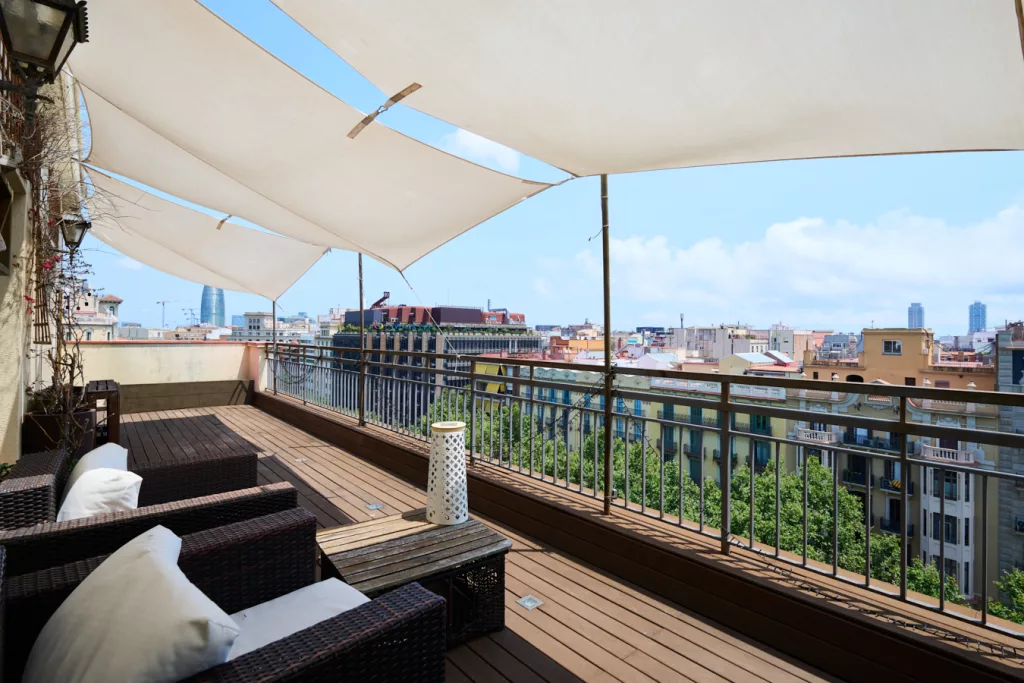Barcelona’s rise to fame is well documented. Since the Olympic Games of 1992, the Catalan capital has hardly looked back. The transformation made the city one-of-a-kind: a progressive urban resort boasting an enviable quality of life, a vibrant culture, a burgeoning gastronomic scene and, more recently, a growing business hub.
The international community took note. They wanted a piece of the action, particularly affluent, entrepreneurial Northern Europeans who could work remotely, and are the brains behind numerous innovative Barcelona start-ups. Even throughout the economic crisis, there continued to be a steady influx of foreigners to the city. At the start of 2018 official figures from Bcn.cat suggest that foreigners represent almost 18.5% of the city`s population. In 2000 that figure was 3.5%.
All this has meant great news for Barcelona’s economy. Landlords in particular have profited from the ongoing demand for quality, centrally located homes to rent. From Q2 2013 when rental prices hit the bottom to Q3 2017 when prices reached a peak, rents in Barcelona grew from €11.4 per square metre to €18.3 per square metre, an increase of 38%.
However, the latest figures released by property portal Idealista show that rental prices in the second quarter of 2018 fell when compared to the first quarter of 2018 – from €17.6 per square metre to €17.2 per square metre – and are down by 5.9% from the peak of Q3 2017.
Year-on-year to Q2 2018, the biggest fall in rental prices can be seen in areas popular with foreigners such as Eixample (-4.9%). The Old Town (-5.2%), Gracia (-7.3%) and Sant Martí, which includes Diagonal Mar (-4.3%). Overall Barcelona city’s average rent fell by 3.4%.
So why is this?
“Like sales prices, rental prices in Barcelona have readjusted in recent months. Continued low interest rates and good rental yields mean that more homes are being rented out, making rents more competitive,” explains BCN Advisors CEO Francisco Nathurmal. “It’s simple economics. Increased supply is doing a better job of meeting demand. Compared to the likes of many Northern European cities, Barcelona still has relatively low rental prices and properties are relatively affordable.”
It is expected that both demand and supply for rental homes will increase throughout the rest of 2018 and beyond, keeping the prices steady or may even see further drops. Much of the demand for homes is expected to come from employees of FinTech companies who have recently chosen to have a base in Barcelona – Amazon , Microsoft, Faecbook, Nestlé and Siemens now all have a presence in the city.
The relocation market is also growing as the way people work continues to change. Many families are choosing to make Barcelona their home but may earn their income elsewhere via the ominpresent ‘virtual office’. If travel is necessary, Barcelona is a gateway to the rest of Europe thanks to its well communicated international airport and efficient far-reaching train links.
With regards to supply of properties, much of this will come from the rental of new homes both in prime and peripheral areas of Barcelona.
According to Spain’s National Institute of Statistics (INE) sales of new homes in the whole of 2017 showed an annual increase of 18% and many of these investors have chosen to rent their new properties out long-term as the moratorium on short-term rentals continues.


 The 10 best luxury penthouses in Barcelona
The 10 best luxury penthouses in Barcelona
 The best luxury clubs in Barcelona
The best luxury clubs in Barcelona
 Luxury nightclubs in Barcelona
Luxury nightclubs in Barcelona
